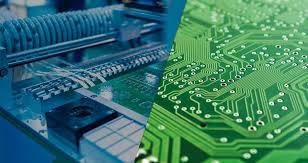Handling High-Frequency Applications
A significant challenge with FR4 PCBs arises when they are used in high-frequency applications. The dielectric constant of FR4, typically around 4.0 at 1 MHz, can lead to increased signal loss as frequency rises, particularly beyond the GHz range. For applications that demand minimal signal attenuation, such as in advanced communication systems or precise RF applications, alternative materials like Rogers or Teflon, which exhibit lower dielectric constants and superior high-frequency performance, might be necessary.
Thermal Management Issues
While FR4 is praised for its thermal resistance, with a maximum operating temperature around 130°C, it can still pose challenges in extremely high-temperature environments. In scenarios where electronic components generate substantial heat, FR4 may not adequately dissipate this heat, potentially leading to performance degradation or failure. This limitation makes it less suitable for power-intensive applications or high-power electronics, where materials with better thermal conductivity, such as ceramic-based PCBs, are more effective.
Moisture Absorption
Another hurdle with FR4 PCBs is their moisture absorption. FR4 can absorb up to 0.2% of its weight in moisture, which may seem minimal but can significantly impact the PCB's thermal and electrical properties. This moisture absorption can result in a higher risk of delamination under thermal cycling and reduced electrical performance, which are critical factors in humid or varying climatic conditions.

Mechanical Stress During Processing
The processing of FR4 PCBs, involving high temperatures and pressures, especially during the lamination process, can introduce internal stresses. These stresses may lead to warping or bowing of the PCB, particularly in larger or thinner boards. This mechanical stress can complicate assembly processes, particularly when dealing with surface mount technology (SMT), where flatness is crucial for proper component placement and soldering.
Environmental and Health Concerns
FR4 contains brominated epoxy resins used for their flame-retardant properties, raising environmental and health concerns. During manufacturing and disposal, these compounds can release toxic elements, which are hazardous to both health and the environment. The industry faces increasing pressure to find more sustainable and less harmful alternatives that do not compromise on the safety or performance of the PCBs.
Cost Implications
Despite its general cost-effectiveness, FR4 may not always be the most economical choice, especially for very simple or extremely high-performance applications. For basic applications, cheaper materials might suffice, whereas, for high-end applications, the need for additional processing or even transitioning to more suitable materials could increase costs significantly.
The Bigger Picture
While FR4 PCBs are a cornerstone of the electronics manufacturing industry, these challenges necessitate careful consideration during the design and material selection phase of PCB development. Understanding these limitations is crucial for engineers and designers to ensure reliability and performance of the final product. For those looking into more about the properties and handling of FR4, this FR4 PCB resource provides extensive information.